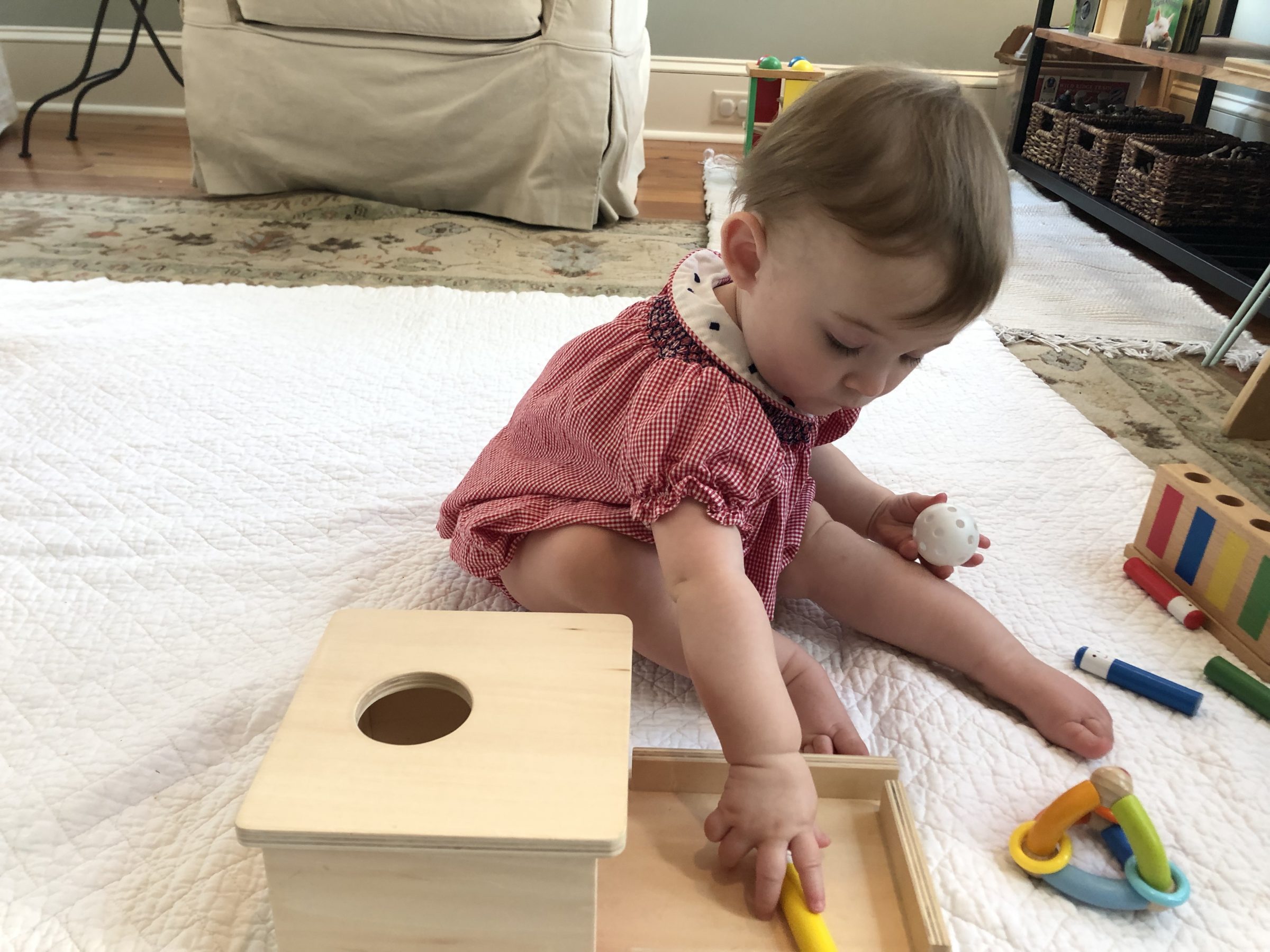“Order is one of the needs of life which, when it is satisfied, produces a real happiness.” ~ Maria Montessori*
A beautifully prepared toddler play space should contain thoughtfully selected toys and materials intended to meet the child’s developmental needs and abilities. Attractive and edited toy shelves and baskets along with open floor spaces can make movement, play and “work” easier. Once prepared, the child is more likely to be drawn in and will want to explore the area or room.
After the child’s learning and fun, it’s common to find empty shelves, baskets overturned and floor spaces strewn with toys. As their model, the adult must also meet the child’s need for boundaries or “freedom with limits.”*
Three Tips for Toy Order:
1. Less Really Is More.
Fewer toys helps the child focus, engage for longer periods of time and in more open-ended ways. It also increases the chances of the toys making it back to the shelf. It’s not nearly as overwhelming to put away a few things. Toys individually placed on the shelf and in low trays or shallow baskets make choices easier too.
2. Blanket for Babies and Young Toddlers
A solid (white or a light color) flat cotton blanket will not compete visually with the toys. The adult must help the child keep the toys on the blanket.
Offer clues, e.g., “I see the toys have rolled off the side of our work mat”. This language should be consistent as the child moves to cotton work mats later. “Let’s put them back on our mat so no one will step on them.”
The young child learning to sit up, crawl or walk will tend to pull toys straight to the floor. For this reason, adding a floor mat in front of the shelf will offer the child consistency.
3. A Mat Works Wonders
The older child (18 months and up) can transition to a traditional (approximately 2’x3’) cotton dhurrie mat to work on. Used in Montessori classrooms, the mat works wonders with most of our floor-friendly toys and activities. Easy for the child to carry, roll out and roll up when finished, the mat can be used in various locations. Multiple mats can be used for large scale activities. This not only defines the play/work area, it shows respect for the toys and work space.
Both the blanket and mat serve as a visual ‘control of error’. When the mat or blanket is full, something has to go back on the shelf before the child can play with the next toy. Over time, the habit of putting things away before taking the next toy out becomes routine.
Boundaries
Of course, home is not a classroom. There will be times when toys will be enjoyed from room to room and/or creativity will find its own path. By providing boundaries, routines and a consistent play space, stress will be less. This also means home spaces will be more attractive—calm, comfortable and clear of clutter—as the youngest of children to head off to discover, learn and explore.

